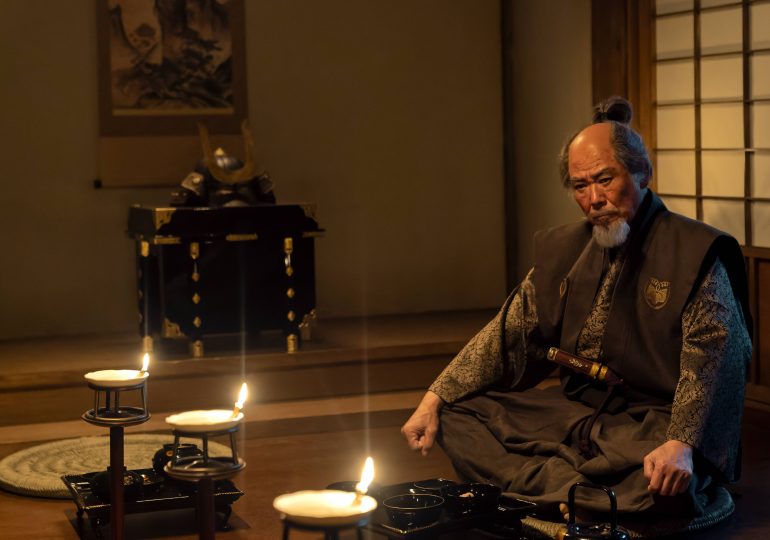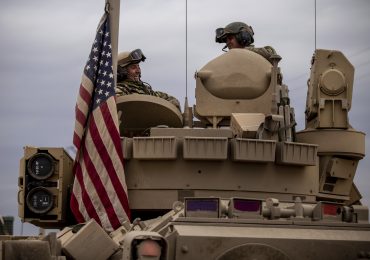Warning: This post contains spoilers for episode 9 of Shōgun.
With just one episode to go in the sprawling, action-packed, emotional journey that is FX’s Shōgun—loosely inspired by real events that took place in turn-of-the-17th-century feudal Japan—the miniseries has reached one of the most devastating and pivotal moments in the best-selling 1975 James Clavell novel on which it’s based: the death of Mariko (Anna Sawei).
[time-brightcove not-tgx=”true”]
In the run-up to the penultimate episode, we saw Toranaga (Hiroyuki Sanada) lose the trust of a number of allies, including Blackthorne (Cosmo Jarvis) and Yabu (Tadanobu Asano), by feigning as though he truly meant to surrender to Ishido (Takehiro Hira) in Osaka. Mariko, on the other hand, remained staunchly loyal to Toranaga as his plan unfolded—even going so far as to profess that she would take her own life over the offense of not being allowed to do her duty to her liege lord.
How does Shōgun portray ritual suicide?
Episode 9 spends much of its runtime leading viewers to believe that Mariko will commit ritual suicide—a practice that was different for samurai women than it was for men—as an act of protest against the dishonor of being kept from obeying Toranaga by escorting his wife Kiri (Yoriko Dôguchi) and consort Shizu (Mako Fujimoto) out of Osaka and back to his camp at Edo.
The custom known as “seppuku,” which specifically refers to ritual suicide by disembowelment, was reserved for men of the samurai class in feudal Japan. Samurai women had different methods, which traditionally involved either slashing their own throat or stabbing themselves in the heart. The show seems to suggest Mariko intends to do the latter.
To spare Mariko the horror of believing that, as a Christian, she will go to hell for committing suicide, Blackthorne is compelled to stand as her second—the person who beheads the samurai after they’ve begun the ritual, thus killing them. But just as Mariko is about to cut into herself, Ishido arrives with a permit approving her departure from Osaka.
Unfortunately, after Mariko is spared, Yabu’s betrayal leads to her being killed later that night in the assault by Ishido’s ninja assassins on Toranaga’s compound. In her final moments, Mariko proclaims that she is sacrificing herself in protest of the “shameful attack” by Ishido, just as she had planned to do earlier that day.
Mariko’s seemingly impending suicide is by no means the series’ first depiction of that type of ritual, as a number of characters throughout the season have either volunteered or threatened to commit suicide—and a few have actually gone through with it.
In the previous two episodes, we’ve seen a flashback in which the first general defeated by Toranaga committed seppuku followed by a harrowing scene in which Hiromatsu (Tokuma Nishioka), Toranaga’s most trusted general and closest friend, committed seppuku in order to save Toranaga’s other three generals from the same fate.
Is the show’s depiction of seppuku historically accurate?
The concept of seppuku originated from the belief in traditional Japanese culture that the soul resides in the abdomen, according to Thomas Conlan, a professor of East Asian studies and history at Princeton University and the editor and translator of the sourcebook Samurai and the Warrior Culture of Japan, 471–1877. “In Europe, the idea of someone’s soul, their center, is usually linked to the heart. In Japan, it’s the stomach,” he says. “So the idea that [samurai] would disembowel themselves was a brave statement that would earn the respect of their enemies.”
But while the historical practice was prevalent among the samurai class during the period in which Shōgun is set, the show’s use of the word seppuku is a “slight anachronism,” Conlan says.
“[A samurai] wouldn’t have said, ‘I’m going to commit seppuku.’ They wouldn’t have referred to it that way,” he says, noting that “seppuku” is a Chinese reading of the same two characters used for the word “hara-kari,” a colloquial term that literally translates to “belly-cutting” and was more common at the time. However, the two words essentially mean the same thing.
The tendency of characters in Shōgun to readily volunteer to commit seppuku is also a bit exaggerated, according to Conlan. “The idea of remonstrating [by committing seppuku] was extremely rare,” he says. “There are a handful of reliable cases where it happened, but it was more often a way out for someone who had committed a major infraction and was going to be executed anyway.”
In Hiromatsu’s case, Conlan says allowing someone who didn’t commit a crime to do that as part of a ploy would have been highly unlikely. “Most good commanders don’t force their generals to kill themselves. It’s bad for morale,” he says. “[Seppuku] was usually associated with some kind of major treason. So in that case, everyone would assume [Hiromatsu] was engaged in a plot to overthrow Toranaga. That’s how it would’ve been read.”
However, during a recent episode of the show’s official podcast, Shōgun co-creator Justin Marks explained that while Toranaga did not mean for Hiromatsu to commit seppuku, his sacrifice made Toranaga’s ruse of accepting defeat truly believable. “There’s a great moment in the scene between Toranaga and Hiromatsu where Toranaga turns to Hiromatsu in shock because he did not intend for Hiromatsu to do this,” Marks said. “And I don’t think Hiromatsu knew that Toranaga wanted these generals to commit seppuku in order to show his enemies that he had surrendered and truly given up and that he has no hope. But in order for that narrative to be perfect, his most treasured general really has to do it. And that’s something that I don’t think even Toranaga wanted to do.”
Leave a comment








